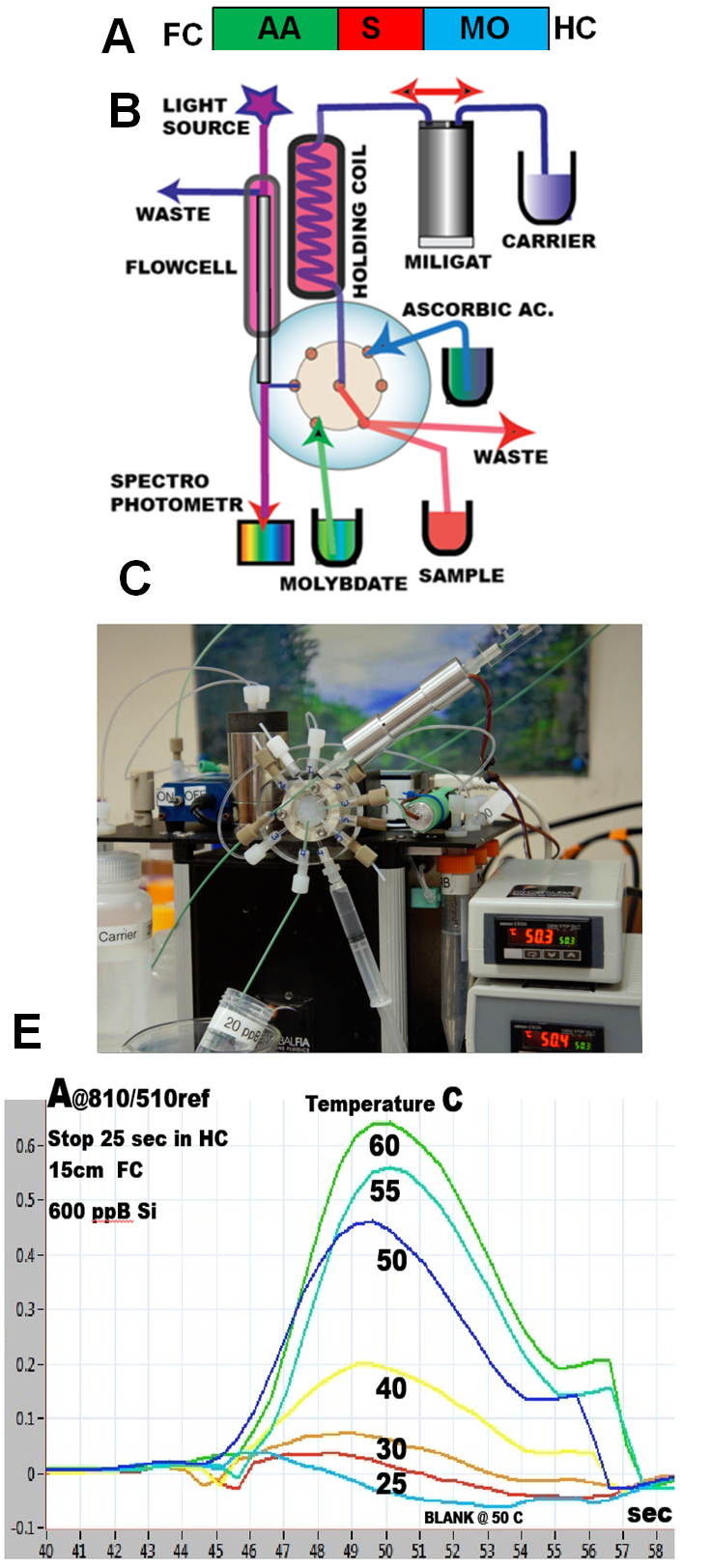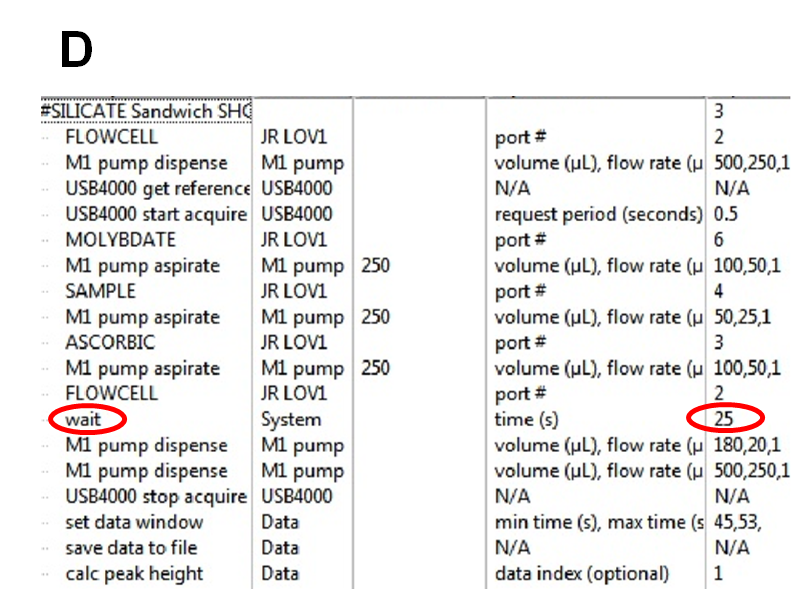Similar to colorimetric method for phosphate, this assay is based on reaction of silicate with ammonium molybdate, which is then reduced to silicomolybdate blue by ascorbic acid. There are, however three main differences; formation of silicomolybdenum is far slower than of the phosphomolybdate, it is not catalyzed by Sb tartarate, and is inhibited by high acidity such as 2M sulphuric acid, which is a preferred medium for phosphate assay. While these differences favor the selectivity of P assay for Si assay, they present a challenge in optimization of silica method.
The influence of temperature on reaction rate was investigated first using sandwich sequence (A) in an apparatus (B) furnished with thermostated holding coil and flow cell (C). The assay protocol (D)
was designed to hold reacting mixture ( 100/50/100 mcrL) in the holding coil for 25 seconds. The superimposed responses (E) show that 50 C is the most suitable temperature, since gain in sensitivity at higher temperatures is not justified when considering adverse effects of potential bubble formation. This sandwich SHC protocol (D) was used to develop the calibration range of 100 to 1800 ppB Si shown on the next page.
Silicate Assay
PRINCIPLE
2.2.31.











